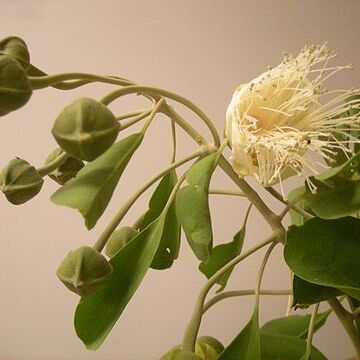A tall shrub or small spreading tree. It grows 3-10 m high. The branches have spines. The leaves are oval and rigid and leathery. They are 2-6 cm long by 1-3 cm wide. The flowers are white or cream. They are about 5 cm across. They are on stalks 3-4 cm long. They occur singly in the axils of leaves or in small clumps near the ends of branches. The fruit are berries. They are 4-7 cm across. They are round and purple or dull orange. The fruit are edible.


